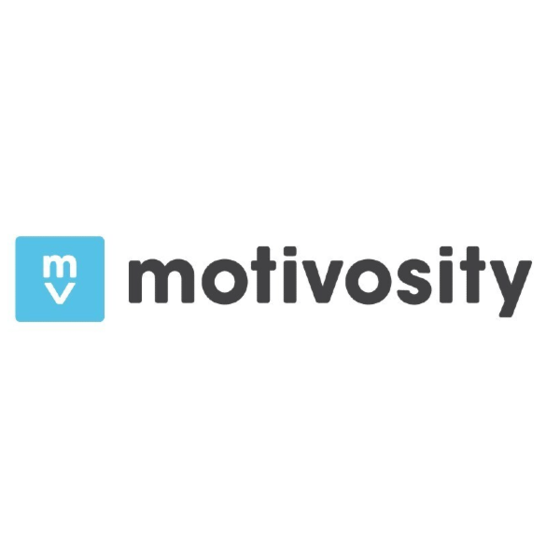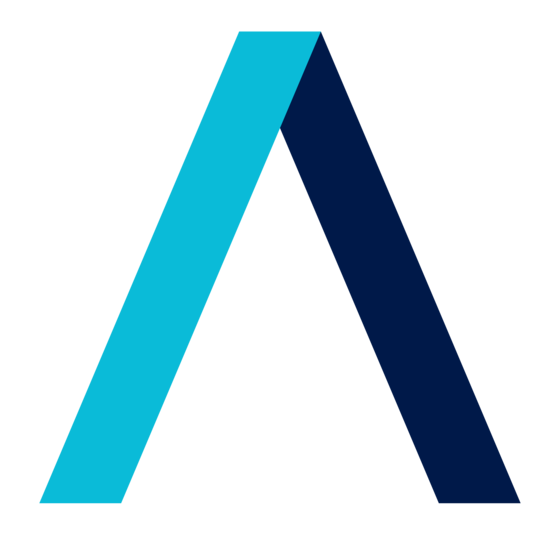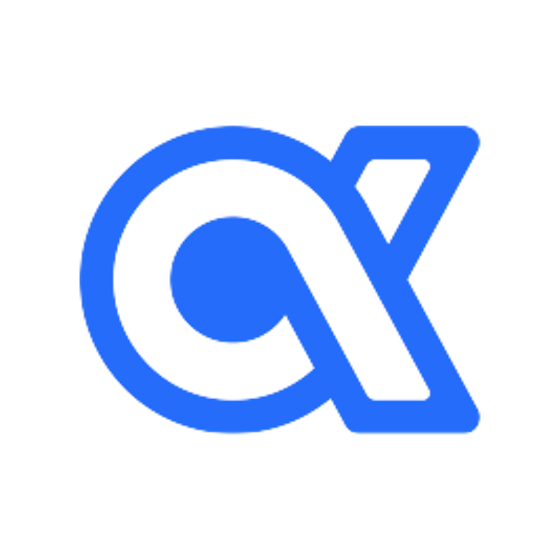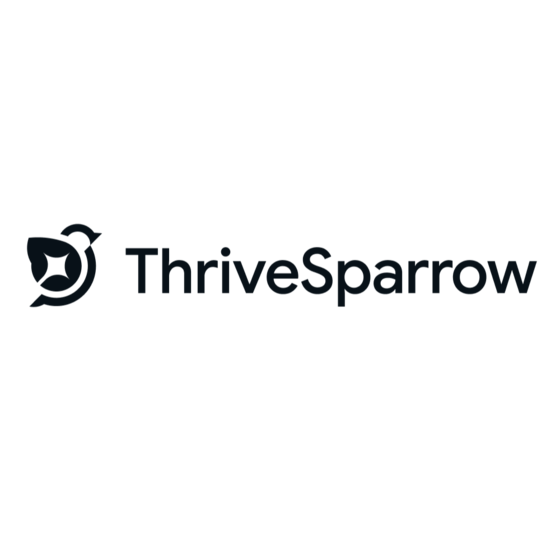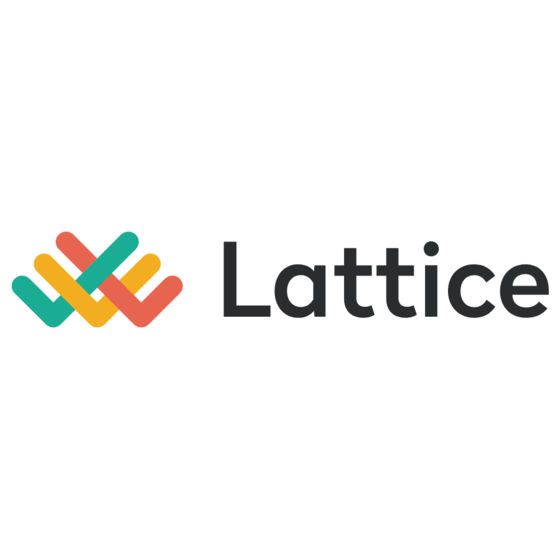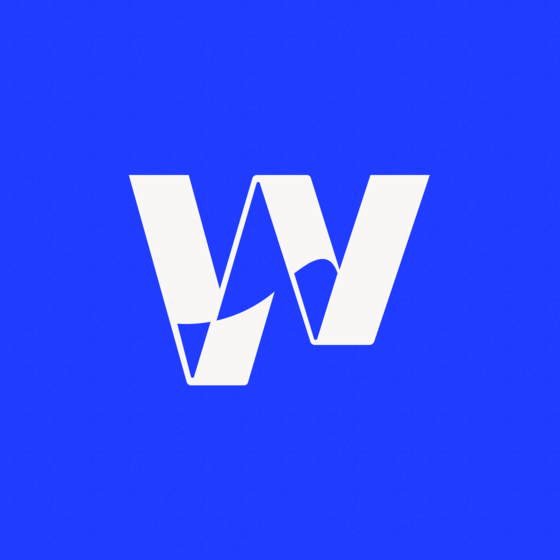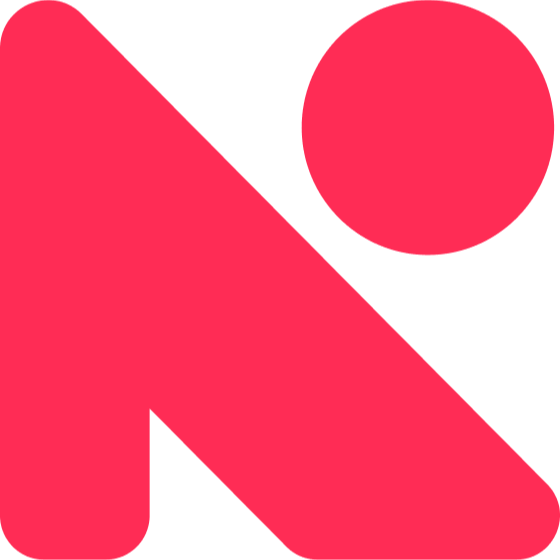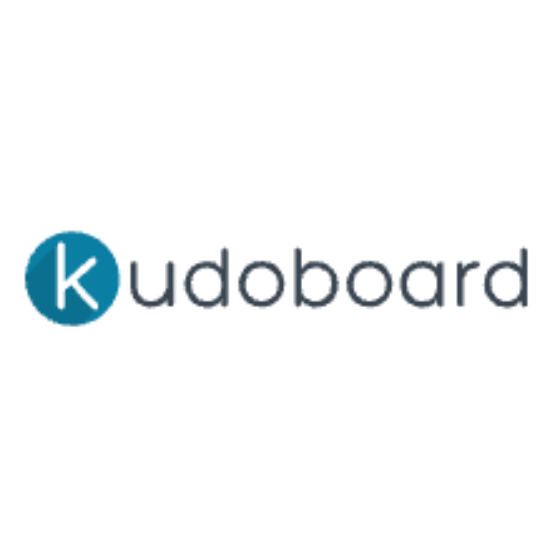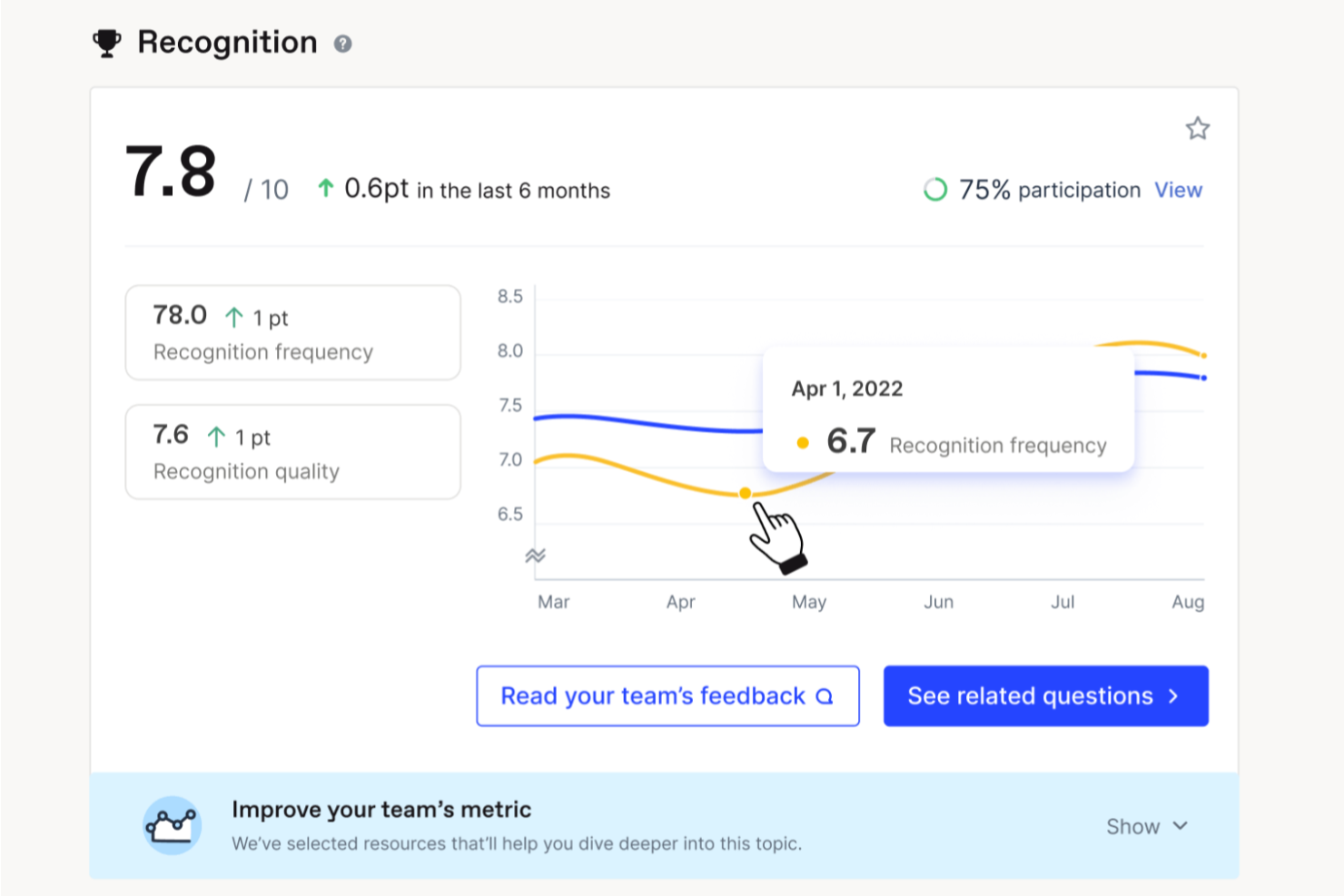10 Best Employee Engagement Software Shortlist
Here's my pick of the 10 best software from the 40 tools reviewed.
The best employee engagement software helps HR professionals collect real-time feedback, track sentiment trends, and take timely action to keep teams connected, productive, and loyal.
Whether you’re replacing software that’s underperforming or moving away from manual surveys and spreadsheets, the right platform can save hours each week, prevent disengagement from going unnoticed, and give leaders the insights they need to improve morale and reduce turnover.
These tools streamline pulse surveys, recognition programs, and engagement analytics in one place, so you can focus on building a thriving culture instead of wrestling with fragmented systems.
I’ve reviewed hundreds of HR tools over the years — testing features, usability, and real-world impact — to bring you this list of the best employee engagement software that are easy to use and designed to solve the most common challenges HR teams face.
Why Trust Our Software Reviews
We've been testing and reviewing HR software since 2019. As HR professionals ourselves, we know how critical and difficult it is to make the right decision when selecting software.
We invest in deep research to help our audience make better software purchasing decisions. We've tested more than 2,000 tools for different HR use cases and written over 1,000 comprehensive software reviews. Learn how we stay transparent, and take a look at our software review methodology.
Best Employee Engagement Software: Comparison Chart
This comparison chart summarizes pricing, trial, and demo details for my top employee engagement software selections to help you find the best option for your budget and business needs.
| Tool | Best For | Trial Info | Price | ||
|---|---|---|---|---|---|
| 1 | Best for peer-to-peer recognition | Free demo available | From $3/user/month | Website | |
| 2 | Best for digitized employee rewards | Free demo available | Pricing upon request | Website | |
| 3 | Best for recognition to boost engagement | Free demo available | From $2 to $5/user/month ($3,000/year minimum) | Website | |
| 4 | Best for personalized strategies using analytics | 10-day free trial + free plan available | From $25/month (billed annually) | Website | |
| 5 | Best for analyzing surveys by sub-groups | Free demo available | Pricing upon request | Website | |
| 6 | Best for incentivizing global teams | Free demo available | Pricing upon request | Website | |
| 7 | Best for real-time engagement analytics | 14-day free trial | From $2/employee/month | Website | |
| 8 | Best for feedback on workplace changes | Free demo available | From $11/seat/month | Website | |
| 9 | Best for creating a positive work culture | Free demo available | Pricing upon request | Website | |
| 10 | Best for ease of use | 14-day free trial + free plan available | From $5/user/month | Website |
-

Native Teams
Visit WebsiteThis is an aggregated rating for this tool including ratings from Crozdesk users and ratings from other sites.4.9 -

Rippling
Visit WebsiteThis is an aggregated rating for this tool including ratings from Crozdesk users and ratings from other sites.4.8 -

Kudoboard
Visit WebsiteThis is an aggregated rating for this tool including ratings from Crozdesk users and ratings from other sites.4.8
Best Employee Engagement Software Reviews
Explore the best employee engagement software to boost morale, strengthen communication, and celebrate your team’s success.
I’ve handpicked and reviewed top tools—highlighting standout features, key integrations, and why each one made the list—so you can quickly find the right fit for your workplace.
Nectar is an employee recognition software designed to enhance workplace morale and engagement by simplifying the recognition process. It offers a user-friendly interface, customizable rewards, and robust reporting capabilities.
Why I picked Nectar: I picked Nectar for its robust peer-to-peer recognition system. This feature allows employees to easily acknowledge and appreciate each other's contributions, which helps build a positive team environment and promotes a culture of appreciation.
The platform's social recognition feed further enhances this by allowing achievements and recognitions to be shared company-wide, increasing visibility and promoting a positive workplace culture. This is particularly beneficial for remote teams.
Nectar Standout Features and Integrations:
Standout features include five reward options, such as products from the Amazon Business catalog, gift cards, company-branded swag, donations, and custom rewards.
Other features include shoutouts, anniversary and birthday milestone notifications, challenges to incentivize employees, and a drag-and-drop interface for designing communications like newsletters and announcements.
Integrations include BambooHR, ADP, Namely, Paylocity, Zenefits, Workday, Rippling, Gusto, Netsuite, G Suite, Okta, OneLogin, and Azure AD.
New Product Updates from Nectar
Nectar elevates internal comms & shoutouts analytics
Nectar rolls out two major updates this week: an enhanced internal communications experience and a powerful new Shoutouts analytics report to boost engagement and recognition across your team. Visit Nectar's official site for more.
Advantage Club is an AI-powered employee engagement and rewards platform designed to attract, retain, and engage employees. It offers solutions like rewards and recognition, sales contests and incentives, wellness programs, gifting, onboarding, and community building.
Why I picked Advantage Club: I like that Advantage Club has a robust rewards and recognition program. This feature allows companies to recognize and reward employees for their hard work and achievements, fostering a culture of appreciation and motivation. Additionally, the platform offers flexible benefits, enabling employees to customize their benefits package according to their needs, which can boost employee engagement and satisfaction.
Furthermore, its wellness programs promote physical and mental well-being, encouraging employees to adopt healthier lifestyles, which can lead to improved productivity and morale. The sales contests and incentives feature is designed to motivate the sales team by offering rewards for achieving targets, which drives better performance.
Advantage Club Standout Features and Integrations:
Advantage Club also offers features for an easy onboarding process, which helps new employees integrate quickly and effectively into the company culture. Additionally, the community-building tools foster a sense of belonging among employees. Other notable features include real-time analytics, gifting options, and policy digitization, each contributing to a more engaging employee experience.
Integrations include SAP SuccessFactors, Workday, Oracle HCM, ADP, BambooHR, Zoho People, and Slack.
Motivosity is a rewards and recognition platform designed to help organizations build and maintain a strong workplace culture by fostering peer-to-peer recognition, feedback, and meaningful connections among employees. It’s widely used by businesses of all sizes that want to improve employee engagement and create a more positive work environment.
As Chantel Chase, Senior VP & Director of the Business Banking Loan Center, shares: “What Motivosity does for us is it helps us bring to the front all of the great things that are happening. The other thing is just easy connection points, so sometimes it's a little bit awkward to reach out to somebody and just say 'Hey welcome to the team'… But if I can reach out and say 'Hey you are a champion, I'm a champion' we have that in common.”
Why I picked Motivosity: It empowers teams to give and receive feedback in real-time, creating a transparent culture of appreciation. One key differentiator is its affordability and scalability, making it accessible for small businesses while also robust enough for larger enterprises.
With tools for goal tracking, surveys, and personal rewards, it provides a balanced mix of functionality to enhance team dynamics. You can easily align employee recognition with your company values without worrying about complex setups or steep costs.
Motivosity Standout Features and Integrations:
Features include peer-to-peer shoutouts, a customizable rewards system, and built-in goal tracking to keep your team motivated and aligned. You can create surveys (including eNPS surveys) to gather employee feedback quickly and ensure their voices are heard.
Other notable features include leaderboards, personality profiles, interest groups, visual org charts, peer-to-peer shoutouts, highlights and company news, and HRIS integration.
Integrations include Slack, Microsoft Teams, Google Workspace, Okta, BambooHR, ADP, Workday, Paylocity, and UKG Pro.
Sogolytics is a SaaS product that's all about employee engagement. You can use it to monitor your employee experience, collect enterprise feedback, send regular engagement surveys, or even tap into your customer experience.
Why I picked Sogolytics: I included Sogolytics in this list because of its broad application, which makes it useful beyond simply measuring employee engagement.
It's easy to use, provides actionable insights, and can handle the needs of a growing business. It has a user-friendly interface that makes it easy to navigate, and it's scalable so it can handle the needs of small businesses and large corporations alike.
Sogolytics Standout Features and Integrations:
Features include automatic pulse surveys, response tracking, a confidential feedback option, and real-time analytics, which means you can see how your employees are feeling and what they're thinking at any given moment.
The predictive analytics feature uses AI to predict future trends in employee engagement so you can take proactive steps to improve.
Another great feature is the employee sentiment analysis. This tool uses natural language processing to understand how your employees are feeling. It can pick up on subtle cues in their communication and give you insights into their emotional state. This is helpful for identifying issues before they become major problems.
Integrations include HubSpot, Marketo, Microsoft Dynamics, ServiceNow, Reddit, Slack, Salesforce, StumbleUpon, Tumblr, Workday, Zapier, and others.
New Product Updates from Sogolytics
Sogolytics Release Enhancements
Sogolytics has rolled out new features that improve survey flow, streamline distribution, enhance dashboards, and expand directory data management. The update also brings improvements to email/SMS handling, data exports, and customization options across dashboards and invitations. For more information, visit Sogolytics' official site.
Mitratech Trakstar is an HR performance software that helps businesses track, measure, and improve employee engagement.
Why I picked Mitratech Trakstar: The software provides various tools to help managers identify engaged employees, understand the factors contributing to employee engagement, and take action to improve engagement levels.
Mitratech Trakstar also offers a suite of HR analytics tools to help businesses understand the impact of employee engagement on key business outcomes such as productivity, retention, and profitability.
Mitratech Trakstar Standout Features and Integrations:
Features include reporting tools that help you segment your engagement survey results in various ways. Data can be filtered by department, location, or any other custom criteria you may want to analyze. Results can be filtered by period, allowing you to track how responses have changed over time.
Moreover, the platform offers several built-in reports, including those for tracking satisfaction scores, response rates, and detailed responses to open-ended questions.
Its real-time dashboard provides a bird's eye view of the survey process, allowing you to see how many employees have completed the survey, what percentage of employees have provided positive or negative responses, and which questions are causing the most difficulty.
Integrations are available with 25+ popular software systems including ADP Workforce Now, BambooHR, Google Workspace, Namely, Office365, Okta, OneLogin, Salesforce, Slack, UKG Pro, and Zoom.
Awardco is an employee recognition and rewards platform designed to support companies in acknowledging and incentivizing their workforce. The platform provides a comprehensive rewards marketplace, which includes a variety of options such as Amazon Business, gift cards, hotels, swag, and experiences.
Why I picked Awardco: This employee engagement software is suitable for companies of any size, from small businesses to large enterprises, and operates globally in over 100 countries, making it perfect for those looking to cultivate engagement and culture with teams operating worldwide.
Awardco is particularly beneficial for organizations that value detailed reporting and budget management in their recognition programs.
Awardco Standout Features and Integrations:
Standout features include service awards to acknowledge employee loyalty and tenure, gifts to show your employees appreciation, and custom incentive programs to encourage employees to engage with one another while driving overall company goals.
Integrations include Slack, Microsoft Outlook, Microsoft Teams, Sage, ADP, Notion, and much more.
ThriveSparrow is an employee engagement and recognition platform. While the engagement and recognition modules are well-established in the platform, additional modules for performance management, goal setting, and one-on-one meeting tools are also available.
Why I picked ThriveSparrow: It offers customizable surveys to measure employee engagement levels, and facilitates anonymous feedback to encourage employees to share their experience.
In addition to monitoring engagement levels, the software also helps improve your culture of recognition. Employees can send recognition messages out to their colleagues, and they appear in a social feed-style layout. Team members can react with emojis, comment, and tag one another to encourage engagement.
You can also set up your organizational values in the system to tie recognition to the shared pillars of your company culture.
ThriveSparrow Standout Features and Integrations:
Features include employee engagement heat maps, employee survey tools with a large volume of researched-backed questions, AI-powered sentiment analysis, real-time analytics, and in-depth engagement reports.
Managers using ThriveSparrow receive reports that provide an overview of engagement levels on their entire team. The reports make it easy to track trends over time, and highlight your team's strong suits and areas for improvement.
The software can also transform engagement reports into targeted action plans, helping HR teams build strategies to address any weak areas.
Integrations include Slack, Workday, HiBob, UKG Pro, Google Workspace, BambooHR, Gusto, Zoho People, ChartHop, Okta, ADP WorkforceNow, Paylocity, Paycor, and numerous other systems.
Lattice Engagement is an employee engagement tool you can use to collect feedback from employees to help you improve your company culture and engagement.
Why I picked Lattice: Company policies affect all employees, making it crucial to get feedback from employees whenever you plan to implement changes in the workplace. Lattice Engagement is an excellent tool that lets you solicit, receive, and analyze employee feedback, ensuring that employee concerns are taken into consideration when planning new company regulations. You can use Lattice Engagement’s Pulse feature to get real-time insights from employees so you can gauge the effectiveness of new initiatives and implement corrective actions.
Lattice Standout Features and Integrations:
One standout feature is Lattice's benchmarking capability which allows you to compare your latest survey results to previous ones to assess how the company is performing. You can also compare internal survey results to third-party benchmarks giving you an idea of how you are faring with other companies.
Lattice Engagement also allows you to create automated onboarding surveys so you can assess the new hire process and improve long-term retention rates. In addition, their platform also offers dedicated templates for eNPS and exit interview surveys as well.
Integrations are available with other HRIS and productivity software, including SFTP Integrations, Google Calendar, Microsoft Teams, Salesforce, Jira, Outlook Email + Calendar, Slack, Okta, Rippling, Workday, and others.
WorkTango revolutionizes how the world's most forward-thinking companies engage and inspire their people. Their Employee Experience Platform enables meaningful recognition and rewards and offers actionable insights through employee surveys. It’s designed for the modern workplace where priorities are clear, achievements are celebrated, and employees have a voice.
Cyndi Garnett, Senior VP of Human Resources and Organizational Development at Braunability, highlights the platform’s accessibility and impact: "If your employees can maneuver through social media, they’ll easily be able to use WorkTango’s Recognition & Rewards and Surveys & Insights software. We can see results every day, in real-time. The solutions are attainable, affordable, and easy to integrate into your company especially with the level of support behind this platform."
Why I picked WorkTango: To help create a better work culture, WorkTango allows unlimited survey creation to engage your workforce, like employee lifecycle surveys to collect feedback at every stage of the employment lifecycle, from onboarding to exit.
It also has employee engagement surveys so managers and HR teams can assess overall engagement levels within the company. These surveys offer insights so teams can better understand different themes and trends and create plans for improving overall culture and experience.
WorkTango Standout Features and Integrations:
Standout features that promote employee engagement include WorkTango's recognition and rewards solution which allows organizations to show appreciation, incentivize a culture of recognition, and reward employees for their actions. The system also uses predictive analytics to suggest actions that will make the biggest impact on your employee engagement program at large.
Integrations include many HRIS and HCM programs like ADP Workforce Now, BambooHR, and Workday, and popular productivity tools like Microsoft Outlook, Microsoft Teams, and Slack. Their platform also includes an API for additional custom integrations, as well as multiple single sign-on (SSO) integrations.
Workleap Officevibe is an intuitive employee experience tool that helps leaders engage and build trust with their team members — regardless of where they're located. The platform is used by over 20,000 customers worldwide, including Dyson, Trivago, and Bose.
Why I picked Officevibe: With a science-backed approach, Workleap Officevibe helps get to the heart of what matters most to your people with features like Pulse Surveys. Team members can answer questions anonymously, creating a safe space to share genuine feedback you can act on.
Officevibe Standout Features and Integrations:
Standout features include the ability to use the platform to set your agenda ahead of time so that everyone can come prepared. Afterward, you can share your notes and collaborate to achieve your desired results.
Other features include customizable 1-on-1 surveys, feedback templates, and reports that help you develop actionable retention and engagement strategies. Managers using Officevibe can now design their own performance management cycles to drive continuous employee development and growth.
Integrations are available with Microsoft Teams, Slack, Office 365, Google Workspace, and BambooHR.
Other Employee Engagement Software Options
Here are a few more worthwhile options that didn’t make the list of the best employee engagement software:
- Leapsome
For linking performance and development
- Cooleaf
For virtual team recognition activities
- Hub
Employee engagement intranet for SMEs
- Confetti
For live team-building experiences
- Workvivo
For connection with company culture
- Vantage Circle
Real-time employee feedback with eNPS
- Medallia
For employee and customer engagement
- Empuls
For reducing team silos
- Culture Amp
For aligning with industry benchmarks
- Qualtrics Employee Experience
For real-time engagement insights
- Nailted
For distributed tech teams
- Xoxoday Compass
For unique rewards and perks
- Pingboard
For rich staff profiles
- Mo
For hybrid teams
- Workmates
Intranet-style system for engagement
- Trivie
For ongoing learning goals
- HubStar
For fostering in-person connections
- Beams
For personalized engagement recommendations
- Jenz
For mobile-friendly employee engagement
- Assembly
For aligning with company values
- Bonusly
For team growth and performance
- Guusto
For employee nominations
- ClearCompany
For high-touch employee engagement strategies
- PerformYard
For continuous engagement with feedback
- Bucketlist Rewards
For company-specific reward opportunities
- Wellable
Unified wellness, rewards, and recognition
- Kudoboard
For remote-friendly appreciation boards
- Terryberry
For recognition and included surveys
- SurveySparrow
For recurring surveys
- Eletive
For real-time pulse surveys
Related HR Software Reviews
If you still haven't found what you're looking for here, check out these other related tools that we've tested and evaluated:
- HR Software
- Payroll Software
- Recruiting Software
- Employer of Record Services
- Applicant Tracking Systems
- Workforce Management Software
Selection Criteria for Employee Engagement Software
Selecting the right employee engagement tool hinges on understanding the core principles of employee engagement and how software can solve common challenges and satisfy organizational needs.
My approach to choosing the best employee engagement software is grounded in thorough research into recent market data on employee engagement systems and how these tools can strengthen bonds between employees and managers, and ultimately boost company morale. Here are the details I evaluated to decide on my final picks:
Core Employee Engagement Software Functionalities (25% of total score): To be considered for inclusion in my list of the best employee engagement software, each solution had to offer the following basic functionalities first:
- Social engagement features such as activity feeds, chat channels, discussion boards, @tagging colleagues, and knowledge-sharing tools to boost engagement
- Tools to monitor employee satisfaction, including pulse surveys or eNPS surveys
- Employee recognition features with optional rewards and incentives
- Integrated employee performance and goal-tracking features
- Tools to facilitate better internal communication and create feedback loops, including polls or a digital suggestion box
- Data-driven insights that highlight company strengths and areas for future improvement
Additional Standout Features (25% of total score): To help me narrow in on the best employee engagement software out of the numerous options available, I also took note of any unique features, including:
- Unique employee wellness and mental health support features
- Advanced analytics and predictive modeling for engagement forecasting and uncovering actionable insights
- Benchmarking metrics to put engagement levels into perspective
- Innovative use of AI for personalized feedback, sentiment analysis, trend analysis, or strategic engagement-focused recommendations
- Customizable engagement campaign tools to enhance your workplace culture
- Integration with broader HR systems and corporate social media platforms for a unified employee experience
It's important to note that there are different sub-types of employee engagement solutions in this list. Some are designed to act as employee survey tools to help you collect feedback, while others are built to help improve internal communication, or are designed to address employee recognition as well as engagement.
Usability (10% of total score): To evaluate the usability of each employee engagement tool, I considered the following:
- An intuitive design and user interface, with a minimal learning curve to master
- A good balance between powerful features and ease of use to accommodate all skill levels and create a positive user experience
- Dedicated mobile apps or a mobile-friendly user interface that supports use on both Android and iOS mobile devices
- Role-based access controls that are straightforward to configure
Onboarding (10% of total score): To get a sense of each software provider's customer onboarding process, I considered the following factors:
- A streamlined setup process and clear configuration guidelines
- The availability of training materials such as videos or interactive tutorials
- Customizable templates to speed up the onboarding process
- Support for migrating employee data into the new platform
Customer Support (10% of total score): To evaluate the level of customer support each vendor offered, I considered the following:
- The availability of multiple support channels, including email, phone, and chat
- The existence of a self-service knowledge base or other self-help resources to speed up troubleshooting
- The overall quality, responsiveness, and helpfulness of the support team during customer onboarding and post-purchase, as inferred from customer reviews
- Evidence of customer satisfaction regarding technical or support issues
Value for Price (10% of total score): To gauge the value of each software, I considered the following factors:
- The availability of free trials or demos to test the software before purchasing
- Competitive and transparent pricing models that reflect the software's feature depth and explain which features are included at each level
- Tiered pricing plans that cater to different business sizes, from small to medium-sized businesses (SMBs) up to enterprise-level organizations
Customer Reviews (10% of total score): Evaluating customer reviews is the final element of my selection process, which helps me understand how well a product performs in the hands of real users. Here are the factors I considered:
- Whether a product has consistently high ratings across multiple review platforms, indicating a broad level of user satisfaction
- Specific praises, criticisms, or trends in customer feedback that indicate the software's strengths or areas for improvement
- Whether customer feedback specifically mentions issues with ease of use, customer support responsiveness, or lacking features
By using this assessment framework, I was able to identify the employee engagement software systems that go beyond basic requirements to offer additional value through unique features, intuitive usability, smooth onboarding, effective support, and overall value for price.
How to Choose Employee Engagement Software
Employee engagement software can help you foster stronger connections among employees, driving better teamwork, higher job satisfaction, and stronger morale. To help you choose the best tool for your needs, keep the following points in mind:
What engagement challenges are you trying to solve? Identifying your current challenges will help guide your selection process by highlighting the specific features and functionalities you need. These challenges may include:
- Emotionally disconnected teams leading to lower productivity and poor collaboration
- Employees who feel undervalued, unrecognized, and disengaged
- Difficulty measuring engagement metrics, making it hard to diagnose the root causes of low morale
- Communication gaps due to unstructured feedback systems and dispersed team structures (like remote and hybrid workforces)
By identifying your challenges early, you’ll align them with the software features that matter most. This also lays a foundation for setting engagement KPIs (like employee net promoter score (eNPS) levels or turnover rates) so you can measure success effectively.
What outcomes are important and how will you measure success? Being clear on your desired outcomes upfront is crucial to avoid wasting valuable time — and budget — on the wrong tool. Key outcomes you may want to measure include:
- Reduced turnover rates
- Improved quarterly eNPS scores
- More frequent, bi-directional feedback opportunities across the company
- Access to advanced analytics and sentiment analysis to track engagement trends
Having clear outcome goals will help you set specific targets and demonstrate the ROI of your new employee engagement platform.
Who are your main users? Think about the different groups who will interact with the software: employees, managers, HR administrators, and leadership. Each group will have unique needs that the platform must support.
For most organizations, you’ll want broad access for employees combined with role-based permissions for managers and administrators to manage workflows, review analytics, and act on feedback.
What is your budget? Setting a realistic budget early on is essential to avoid wasting time considering options outside your price range. Most engagement platforms are priced on a per-employee-per-month basis, so you’ll want to calculate your current headcount plus future growth projections.
Do you require specific software integrations? Decide whether your new platform will need to integrate with your existing systems — or potentially replace them. In some cases, an all-in-one engagement platform can consolidate several tools and reduce your overall software costs.
Key integrations to consider include:
- Communication tools like Slack, Microsoft Teams, and Zoom
- HR management systems (HRIS)
- Performance management systems
Does the employee engagement platform satisfy your technical requirements? Beyond features, make sure the software fits your organization's technical needs and security requirements. Ask yourself:
- Does it meet our data security standards (e.g., two-factor authentication, SOC 2 compliance)?
- Can employees access the platform through mobile apps or mobile browsers?
- Does it integrate with our workplace productivity tools (e.g., Microsoft 365, Google Workspace)?
Final Tip! Every organization is different — don’t assume that just because a tool is popular, it’s the right fit for your team. Always match the platform’s strengths to your specific needs and goals.
In a previous role, I helped implement an AI-powered tool to measure employee engagement across multiple locations. By integrating sentiment analysis with performance metrics, the tool allowed leaders to identify early signs of disengagement and address issues proactively.
Trends in Employee Engagement Software for 2025
Employee engagement software continues to evolve with an emphasis on personalized experiences, holistic employee wellness, and data-driven insights.
Here are the most important trends impacting engagement technology currently:
- Advanced Analytics and Predictive Insights: The most rapidly evolving feature is the use of sophisticated analytics to provide actionable insights into employee morale and engagement levels. Software now often includes predictive analytics capabilities, allowing organizations to anticipate engagement dips and proactively address issues before they impact morale.
- Personalization and AI Integration: There's a clear trend toward leveraging AI to tailor engagement strategies to individual employee needs. AI employee-engagement tools might even include sentiment analysis. are increasingly incorporating machine learning algorithms to analyze feedback and performance data, enabling managers to offer personalized support and recognition.
- Holistic Wellness Features: An unusual yet increasingly popular functionality is the integration of wellness and mental health resources within employee engagement platforms. This includes access to meditation apps, wellness challenges, and mental health days. Such features reflect a growing recognition of the importance of supporting employees' overall well-being as a key component of engagement.
- Gamification and Rewards: Incorporating game-like elements and rewards into the employee experience is becoming more popular, serving to motivate employees through achievements and milestones with engaging, rewarding experiences.
- Automated Surveys and Smart Algorithms: The adoption of automated surveys and intelligent algorithms has risen in response to the need for more efficient and insightful feedback mechanisms. These enhanced feedback collection processes allow companies to quickly gather and analyze employee sentiment, thereby enabling more responsive and informed decision-making.
These trends highlight a move towards more nuanced, data-informed, and holistic strategies to employee engagement that underscore how employee engagement is not just about measuring satisfaction, but about actively enhancing the work experience to create a happier and more productive workforce.
By focusing on predictive analytics, personalization, wellness integration, gamification, and other intelligent tools, software developers aim to address the changing needs of modern organizations to help them stay more competitive in the talent market.
What is Employee Engagement Software?
Employee engagement software is a digital tool that helps HR teams boost morale, reduce turnover, and improve workplace culture by measuring and enhancing employee satisfaction.
Used by HR professionals and team leaders, it solves challenges like disengagement and communication gaps by enabling pulse surveys, real-time feedback, and recognition—all in one centralized platform.
Hybrid workplace culture requires intentionality… You need to create opportunities for remote workers to feel included, whether it’s through virtual team-building activities or regular check-ins to make sure they’re engaged.
Limitations of Traditional Methods for Managing Employee Engagement
Traditional approaches to employee engagement—like spreadsheets or manual tracking—often fall short in today’s fast-paced workplaces. Without automation and data-backed insights, HR teams struggle to keep up with shifting employee needs. Common challenges include:
- Time-Consuming & Error-Prone Processes – Manually updating and analyzing data is slow and increases the risk of mistakes, leading to inaccurate insights.
- Delayed Responses to Engagement Issues – Without real-time feedback tools, spotting disengagement early becomes difficult, resulting in missed opportunities to improve morale.
- Limited Visibility into Employee Sentiment – Traditional methods lack features like pulse surveys and sentiment tracking, making it harder to understand the full employee experience.
- Fragmented Data & Lack of Integration – Disconnected systems create scattered information, preventing HR teams from getting a complete, data-driven view of engagement.
Modern employee engagement software solves these challenges by automating data collection, providing real-time insights, and equipping HR teams with the tools they need to foster a more engaged and motivated workforce.
Founding an employee engagement software ten years ago taught me the value of using psychology and data to influence hearts and minds during tough transitions.
Features of Employee Engagement Software
Employee engagement software can do a lot of heavy lifting when it comes to improving job satisfaction, strengthening retention, and fostering a positive work environment and company culture.
Here are the most important features to consider in employee engagement tools:
- Communication Tools: The best systems include company-wide communication tools to ensure everyone's on the same page and receiving the same information. This includes features like activity feeds, company announcements, news updates, newsletters, and event notifications.
- Employee Recognition Tools: With many systems spanning engagement and recognition, I took special note of any systems that included peer-based recognition tools. That includes features like public shout-outs for key achievements and recognition for important milestones across the employee lifecycle (e.g., work anniversaries, birthdays, a new employee's first day, etc.).
- Rewards and Incentives: Some systems take engagement and recognition one step further, making it possible to offer employees tangible rewards and perks for reaching their goals or key milestones.
- Customizable Surveys & Pulse Surveys: Having the ability to customize surveys is important, so you can tailor the questions to your needs and gain more accurate and actionable insights. In addition, short, frequent pulse surveys give a quick insight into the mood and engagement levels of employees, helping to uncover trends to further enhance workplace satisfaction.
- Employee Performance Tools: This includes tools that link engagement and performance, such as 1:1 check-in details that are fed into performance review reports, and tools that collect 360-degree feedback from other colleagues.
- Gamification Features: Some systems allow employees to earn points for key activities like recognizing colleagues or digital badges or awards for achieving certain goals. These features help to boost engagement by incentivizing these activities to increase employee participation.
- Goal Setting & Tracking Tools: These features are often linked with performance management, but I paid special attention to any systems that included goal-tracking tools that make monitoring productivity intuitive. Many systems also allow you to track KPIs (key performance indicators) or OKRs (objectives and key results) too.
- Mobile Accessibility: With the increasing prevalence of remote work, having a mobile-accessible platform ensures that all employees can engage and provide feedback, regardless of their location. (When considering mobile accessibility, make sure the software supports both Android and iOS mobile devices.)
- Insightful Analytics: There's little point in collecting loads of employee engagement metrics if you're not going to do anything with them. I took a closer look at the analytics each system covered, including any tools that help monitor employee sentiment, identify problem areas, and any insights to boost employee retention.
- Action Planning Tools: Beyond gathering data, the software should offer tools to help managers create and implement action plans based on the feedback received, closing the loop on engagement initiatives.
By prioritizing software with customizable surveys, comprehensive analytics, and these other key functionalities, you'll gain the tools you need to foster a culture of continuous improvement and engagement.
I recently coached a leader through identifying the ‘hidden languishers’ on their team—those who seem productive but are emotionally checked out. We used tools like individualized check-ins to rebuild connection and engagement, and within weeks, team morale visibly improved.
Benefits of Employee Engagement Software
Employee engagement software plays a critical role in maintaining a positive workplace culture, giving managers the tools they need to communicate effectively, collect feedback, recognize achievements, and improve job satisfaction and morale.
By investing in the best employee engagement software for you, you can expect to gain the following benefits:
- Improved Internal Communication: By breaking down communication barriers, employee engagement software ensures that every team member is on the same page, fostering a more collaborative and inclusive work environment.
- Increased Employee Satisfaction: By giving employees a platform to voice their opinions and receive acknowledgment, companies can boost morale and job satisfaction, leading to a more content and motivated workforce.
- Enhanced Productivity and Performance: By aligning employee goals with organizational objectives, the software helps in tracking progress and providing the necessary support, leading to enhanced overall performance and productivity.
- Reduced Turnover Rates: It's no secret that engaged employees are more likely to stay with their employer. By using employee engagement technology to make employees feel more valued and connected, businesses can significantly reduce turnover rates, saving on the costs associated with hiring and training new staff.
- Data-Driven Insights for Better Decision Making: Employee engagement tools provides valuable data on employee satisfaction, engagement levels, and feedback, helping management teams identify areas of improvement, strategize better HR policies, and make data-backed decisions.
As you can see, investing in employee engagement software is not just about adopting new technology; it's about committing to a culture that values feedback, promotes collaboration, and recognizes the contributions of every team member.
By investing in software to prioritize employee engagement, businesses can unlock the full potential of their workforce and drive operational success.
Every time we think about engaged versus disengaged, we think of them as words and numbers, but we need to think of them as real life examples.
Costs & Pricing for Employee Engagement Software
Employee engagement software pricing varies based on features, scalability, and support. Typically, prices range from $3 to $30 per user, per month, with some vendors offering custom quotes due to modular systems. This flexibility allows you to pay only for the features you need.
To compare pricing, check our table of average plan costs. Be sure to explore free demos or trials before committing.
Plan Comparison Table for Employee Engagement Software
| Plan Type | Average Price | Common Features |
|---|---|---|
| Free | $0 | Basic surveys, limited analytics, and community support |
| Basic | $2-5 per user/month | Surveys and feedback, basic analytics, and email support |
| Standard | $5-10 per user/month | Enhanced surveys, full analytics suite, performance tracking, and email and chat support |
| Premium | $10-30 per user/month | Custom surveys, advanced analytics, integration capabilities, performance management, and 24/7 support |
| Enterprise | Custom pricing | All Premium features plus custom integrations, a dedicated account manager, and tailored training and customer support |
When considering which plan is right for your organization, weigh the balance between the features you need and the budget you have available. A free option may be a good starting point to test the waters, while Premium and Enterprise plans offer comprehensive tools for larger or more complex organizations needing detailed insights and support.
While it's understandable that you may want to start with a free or basic plan initially, there are several reasons why you may want to opt for a more advanced plan, including:
- Integration with Other Systems: Most free and basic plans don't offer software integrations, making this the most common reason to upgrade your plan. If you integrate it with your HR software, you can easily automate milestone announcements like staff birthdays and work anniversary dates, letting the system do the work for you.
- Customizable Engagement Strategies: Free and Basic plans often limit customization options. Instead, advanced plans allow you to tailor engagement initiatives to fit your unique company culture, making it more meaningful.
- Employee Surveys with Sentiment Analysis: Many advanced plans offer integrated tools to conduct employee surveys or eNPS check-ins, including sentiment analysis tools to help you gauge the emotion behind your employee's feedback. Though these features cost a bit extra, they'll help you gather comprehensive insights and respond more effectively to employee concerns.
- Advanced Communication Tools: If your company requires more sophisticated communication channels, such as custom newsletters or targeted messaging, an upgrade may be necessary to unlock these advanced features.
- Enhanced Analytics and Reporting: If you want more in-depth insights into your employee engagement trends, upgrading your plan may be necessary. Advanced plans typically offer more robust analytics to help you make data-driven decisions to improve workplace satisfaction.
Ultimately, it's important to secure a plan that offers the features you require to satisfy your current needs and solve your challenges without exceeding your budget.
Employee Engagement Software: Frequently Asked Questions
Here are some answers to questions people often have about employee engagement software and how it works:
Are there any free employee engagement software systems?
Yes, several employee engagement software providers offer free versions or limited free trials. These often include basic tools such as simple surveys, feedback collection, or recognition features.
However, free plans usually come with restrictions on the number of users, survey frequency, or advanced analytics. If you have a small team or want to explore a tool’s interface before committing, starting with a free plan is worthwhile. When scaling up, consider upgraded options for more robust reporting, integrations, and customization.
What integrations are important for employee engagement software?
Employee engagement platforms work best when integrated with your existing HR tech stack. Key integrations include HRIS and payroll systems (like ADP, BambooHR, or Workday), communication tools (Slack, Microsoft Teams), and project management software (Asana, Trello, Jira). These integrations let you automate user provisioning, push notifications, connect survey data to employee records, and gather feedback directly where your teams collaborate.
You should also ask providers about open APIs and support for single sign-on (SSO) to streamline your staff’s experience and enhance data accuracy.
How do you calculate the ROI for employee engagement software?
To calculate ROI, first track the software’s total cost—including subscription fees, training, and setup. Next, identify measurable outcomes, like increased employee retention, improved eNPS scores, higher engagement survey participation, and reduced absenteeism or turnover costs.
Many platforms provide built-in analytics to measure these data points. Compare pre- and post-implementation data, estimating cost savings from retaining productive employees or reducing recruitment spending. Present these results to leadership in concrete numbers to demonstrate the software’s value.
A simple formula to use is:
ROI = (Gain from Investment – Cost of Investment) / Cost of Investment
What is the average implementation time for employee engagement software?
Implementation typically takes from two to six weeks, but timelines vary by company size, tool complexity, and integration requirements. If you only need basic surveys or feedback functions, configuration may take a few days. More comprehensive platforms—with integrations, workflows, and custom branding—require several weeks for setup, training, and testing.
Work closely with your software partner to define a rollout plan, provide clear internal communication, and pilot the tool in one department before full deployment.
What security features do engagement platforms offer?
Employee engagement platforms typically offer end-to-end encryption for data in transit and at rest, SOC 2 or ISO 27001 certifications, and compliance with regulations like GDPR or CCPA. Other essential features include user authentication, audit trails, configurable access controls, employee data anonymization, and regular third-party security audits.
Ask your vendor about their incident response plan and the ability to manage user permissions, especially if you deal with sensitive employee feedback or personal data.
What are the most common reasons employee engagement software fails to gain adoption?
The biggest obstacles to adoption are limited leadership support, a lack of communication about the tool’s value, and insufficient staff training. Sometimes, employees are concerned about anonymity or data privacy, which can hinder honest feedback.
To ensure success, involve stakeholders early, be transparent about how feedback will be used, and train both managers and employees on the platform. Frequent reminders, leadership endorsement, and acting on collected insights all help to sustain participation.
Can employee engagement software help with hybrid or remote team management?
Yes, employee engagement software is especially helpful for managing hybrid and remote teams. These tools enable HR leaders to distribute surveys, collect pulse feedback, facilitate recognition programs, and track sentiment in real time—no matter where staff are based. Gamification, virtual shout-outs, or digital suggestion boxes maintain connection and motivation.
With dashboards and automated reporting, you can easily spot engagement trends or emerging issues across in-office and remote groups, enabling proactive culture management.
What metrics and reporting features should I prioritize in employee engagement software?
Focus on metrics such as overall engagement scores, survey response rates, eNPS (employee Net Promoter Score), turnover and retention rates, and breakdowns by department or team. Robust reporting features should include custom dashboards, longitudinal trend analysis, and benchmarking against industry averages.
Choose platforms that allow for demographic filters and actionable insights, so you can identify strengths, address weak spots, and tailor strategic initiatives for specific employee segments.
Other Employee Experience Software Reviews
Looking for another style of software to boost engagement and employee satisfaction? Take a look at these other options I've already curated for you:
- Employee Experience Software for Engagement & Performance
- Employee Evaluation Software for Performance Reviews & Recognition
- Employee Wellness Platforms for Employee Health & Well-Being
Subscribe to Improve Your Employee Engagement
Don’t forget to sign up for our free weekly newsletter, too. We’ll send you a steady stream of tips, tricks, and resources to help you keep your employees engaged and working productively. Plus, you’ll get insights and strategies from top thinkers in the industry.




